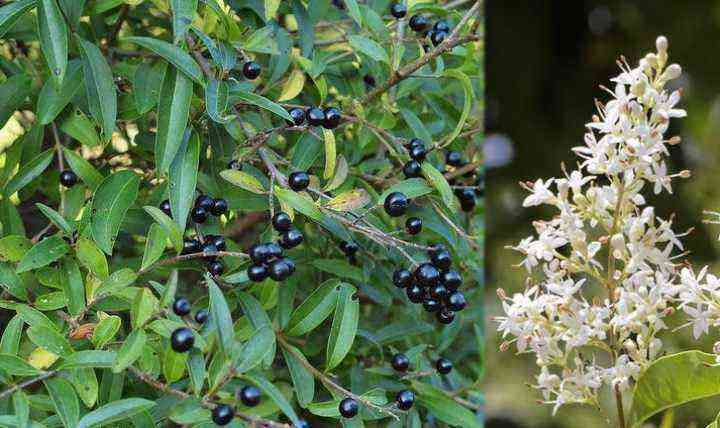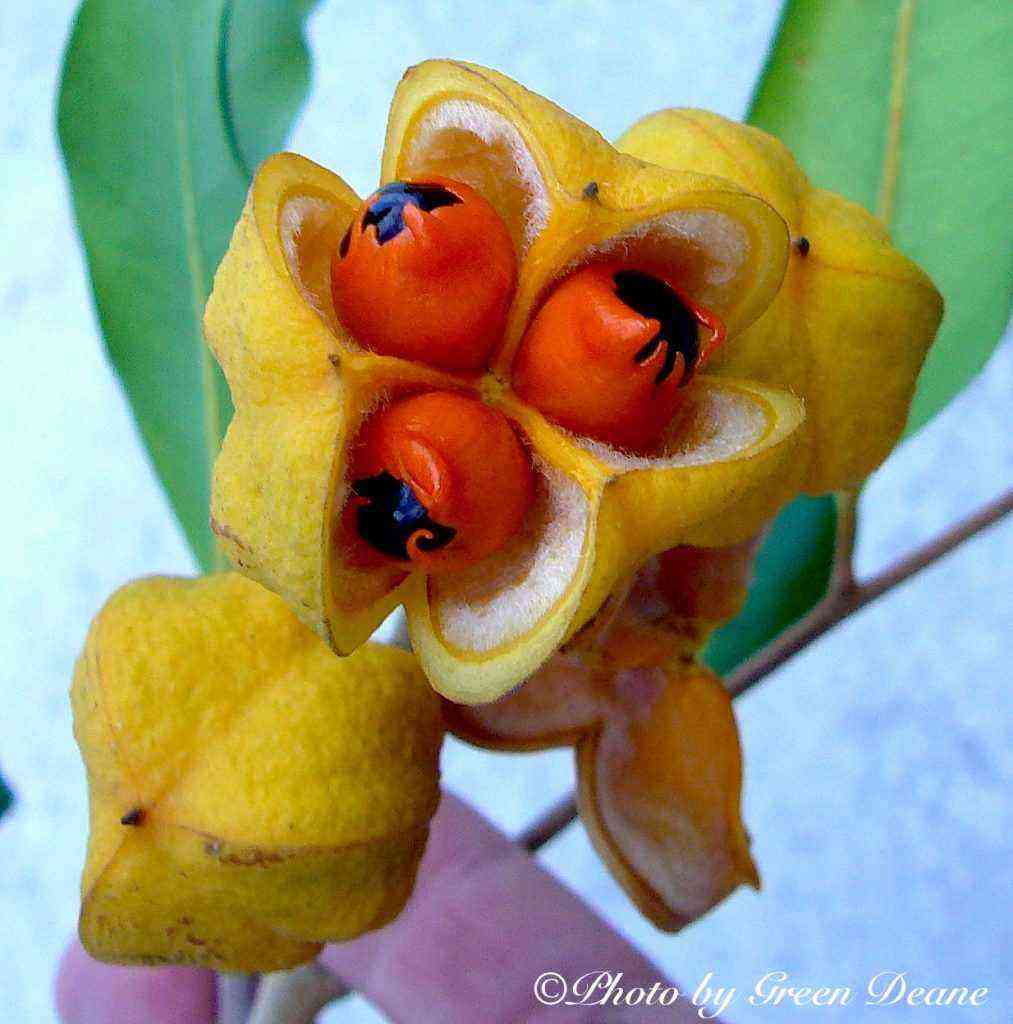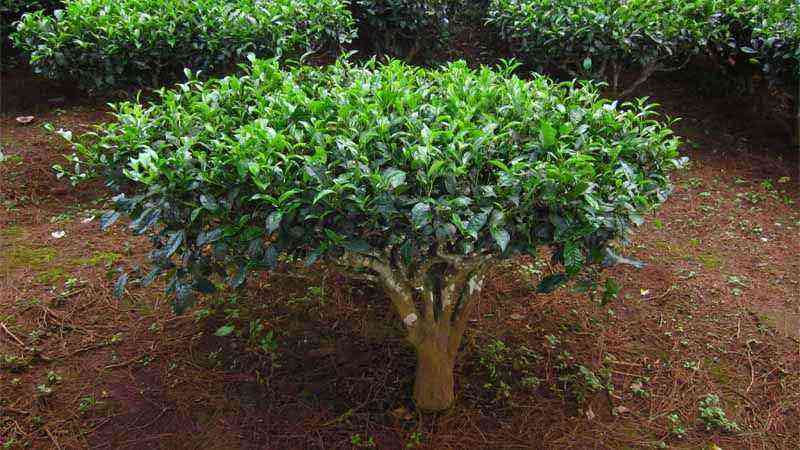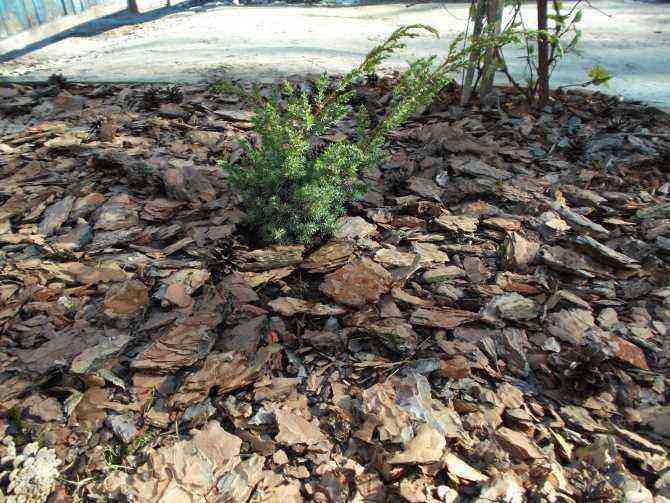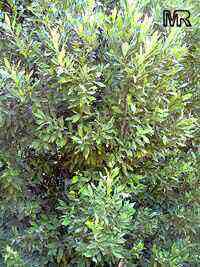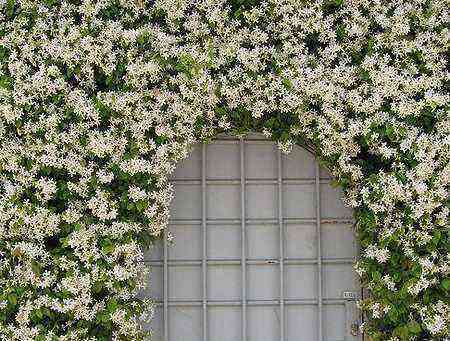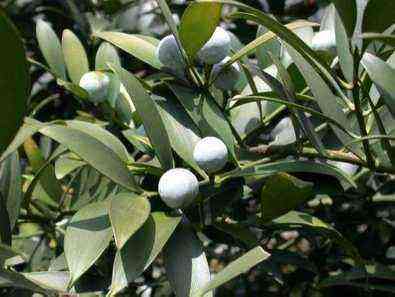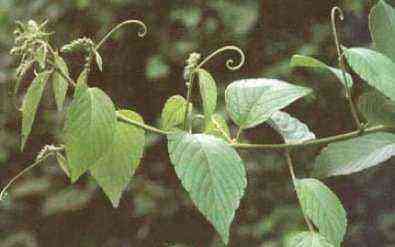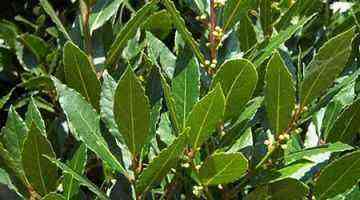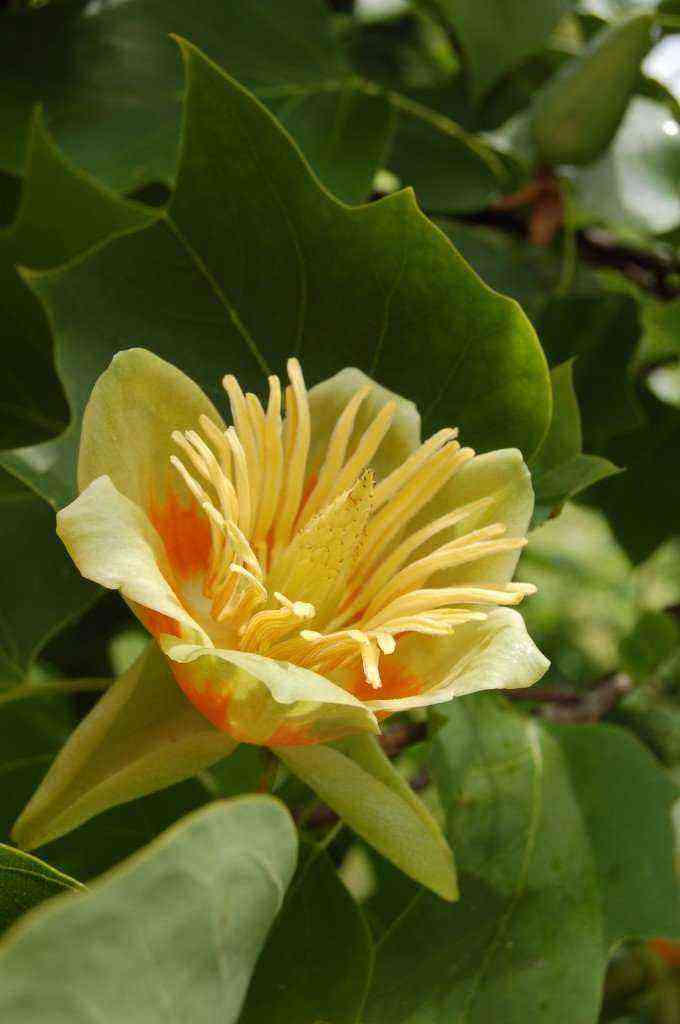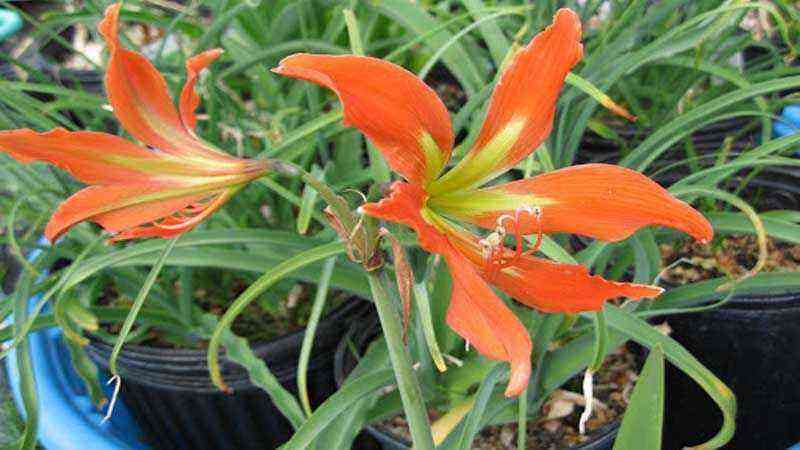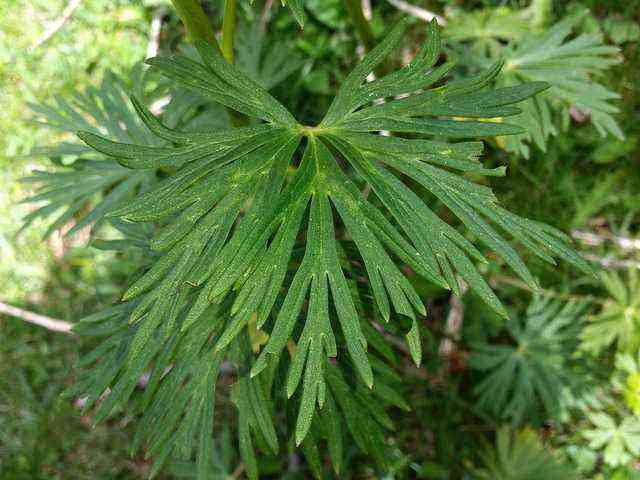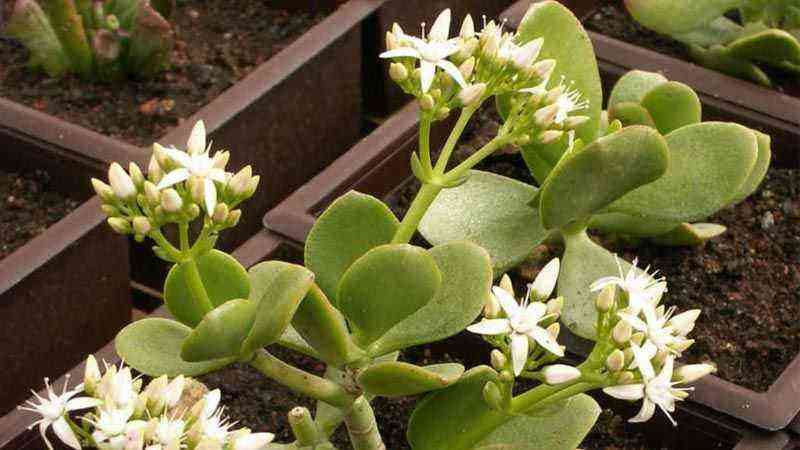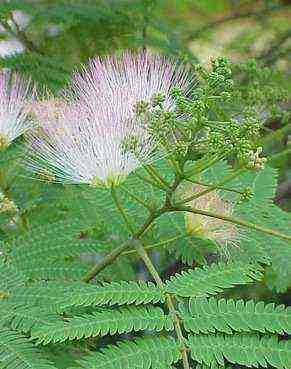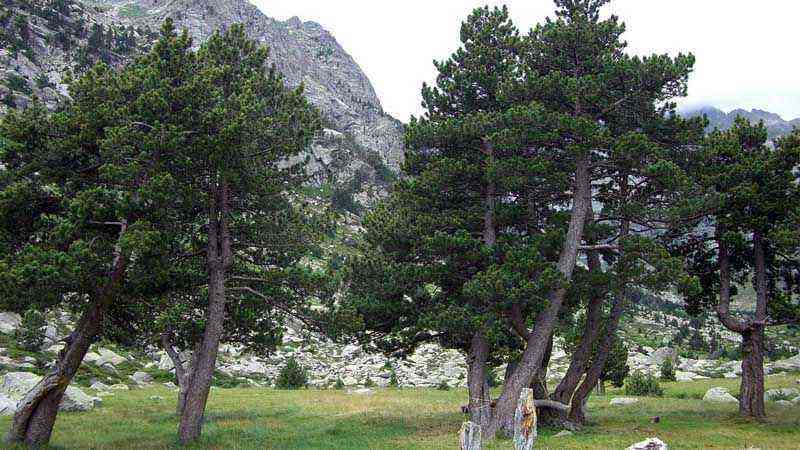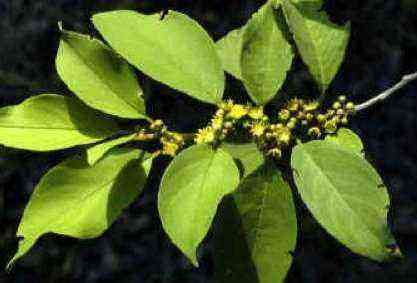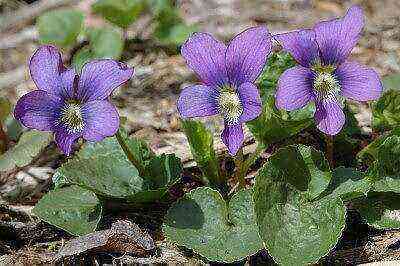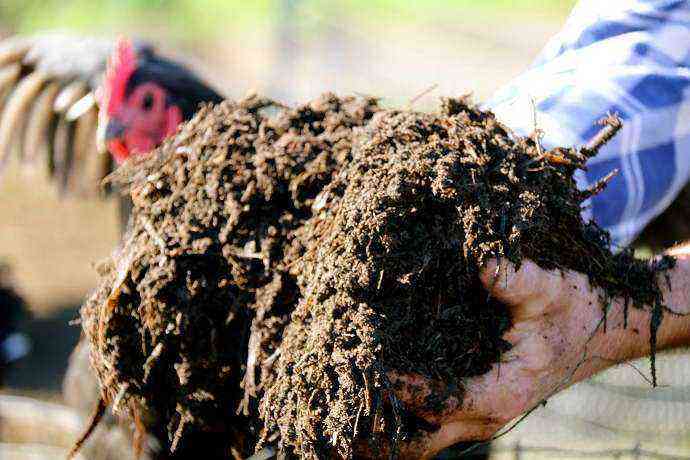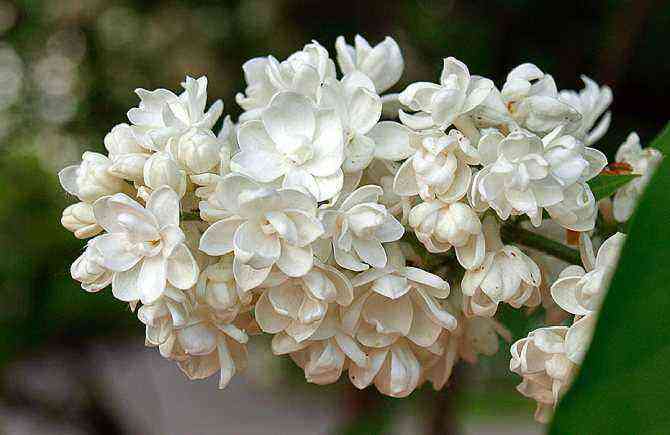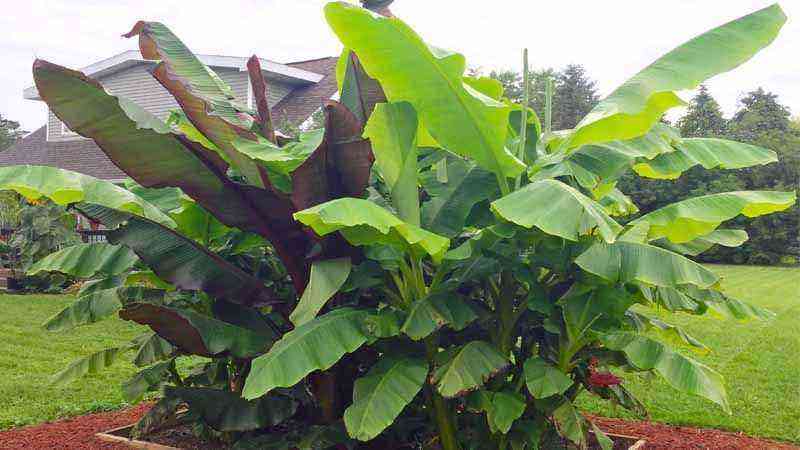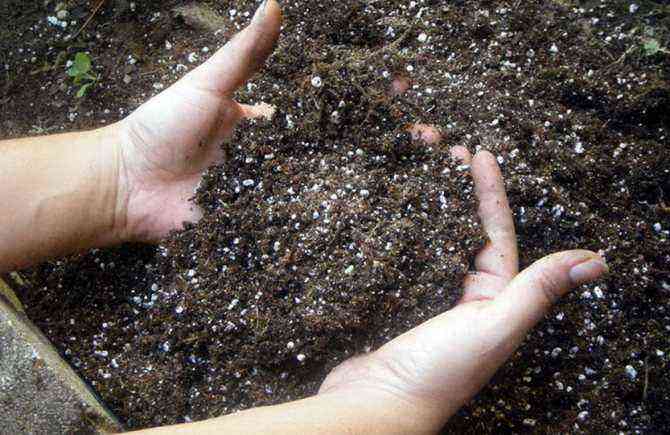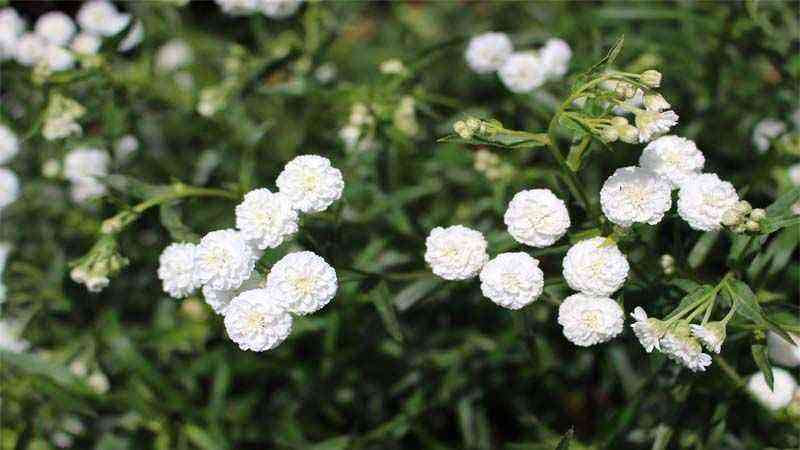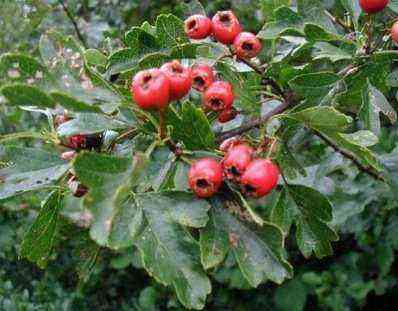Description of privet types
Among the many plants of the genus, there are undersized and tall shrubs, they are malleable to shaping pruning, and beautiful bonsai can be grown from them.
There are several types of privet that are most commonly grown:
Common privet is shade-tolerant, can grow up to 5 meters in height. Grows in the forest zones of the Caucasus, Asia, Europe. The leaves of this species are elongated, ovoid, dark green, slightly lighter on the inside. Flowering lasts until the end of summer, with a mass planting, the fragrant aroma of flowers spreads. After flowering, small berries appear that grow on the bushes until the beginning of winter. The shrub is hardy and is most often grown in cold regions.
There are several popular varieties of common privet:
- “Vicar” is a semi-deciduous bush that grows up to 1 meter in height. The leaves have a different color depending on the season, in summer – golden, in winter – purple, with a bronze tint;
- “Glaukum” grows well in sunny places and nutritious soil. This bush does not grow taller than 1 meter. The foliage is dark blue, with a grayish tint. In winter, the bush needs shelter;
- “Aureum” is well suited for the central regions of Russia. Adapts to dry weather, hibernates without shelter. The bush does not grow quickly, has a beautiful golden color;
- “Atrovirens” tolerates severe frosts, its height can reach 3 meters. White bloom, bottle-colored foliage, brownish in autumn.
Privet brilliant grows naturally in China, Korea, Japan. It can grow as a voluminous bush or a short tree. The length of an oval leaf can be up to 15 cm. During flowering, white flowers are collected in fragrant inflorescences 18 cm long. The shrub blooms for three months.
Important! This type of privet can be grown in our regions with good shelter in winter, withstands up to 15 degrees of frost.
Privet Sines is a short bush native to China. This variety belongs to the common privet. In the conditions of the Russian climate, it grows up to 2 meters in height. In winter, it can withstand a short frost down to -30o C. If a frosty winter without snow is ahead, it is better to build a shelter for the bush.
Japanese privet can be found in Korea. This bush is dense enough that it makes it possible to subject it to various formative pruning. The growth of this shrub is slow, the flowering is not outwardly attractive.
Privet Ibota is a sprawling shrub that sheds its leaves in the fall. The leaves are elongated, dark green, with a grayish tint on the inside. Blooms in summer, but not regularly. The inflorescences give off an intense aroma during flowering. In winter, privet must be protected from frost.
Variegated privet from Chinese varieties. The leaves of this variety are yellow, the plant blooms in autumn, the flowers are a little creamy. Fragrant flowering occurs for the first time after three years from the moment of planting.
Important! For planting this variety, you need to choose sunny areas and nutritious soil.
Variegated privet grows quickly and is often used in landscape design.
Oval-leaved privet has a thick, tapered shape. The color of the leaves is closer to light green with a yellow border. In winter, part of the foliage falls, which does not spoil the appearance of the shrub at all. The height of the bush reaches 1 meter, the annual growth is 15-20 cm.
The varieties of this privet include golden and silver. They are similar to each other, differing only in the color of the leaves. Low-growing bushes, their height does not exceed one meter.
Privet Kwihou grows in some provinces of China. The bush grows to a height of 2 meters, its leaves are quite tough and small. Inflorescences appear at the end of summer, grow 20 cm long.
Privet Argentum grows as a one and a half meter shrub. The plant rarely gets sick and is affected by pests. It lends itself well to haircuts, fits harmoniously into the design of gardens.
Privet Atrovirens is a kind of common varieties. A pungent aroma appears during flowering. The shrub reaches 4 meters, partially retains its foliage in winter. In autumn and winter, the color of the leaves changes from green to burgundy brown. The plant belongs to unpretentious varieties, but there are conditions under which it develops better.
Privet Molodushka is a deciduous shrub. It has a spherical shape, up to 5 m high. Flowering in the bush later than in other species occurs at the end of summer. This species is demanding on the soil, giving preference to light, loose soil.
Privet does not tolerate frost well, but it can recover on its own.
Description of the privet shrub and its photo
We offer a short description of the common privet shrub, which is accompanied by numerous photos of the plant. The leaves are elongated, not smooth, of a dark green hue, for the most part (there are also yellowish ones). The flowers are snow-white, with a smell, small in size, collected in inflorescences in the form of tassels or panicles. The flowers are bisexual, with a white corolla. The color of the shrub can be observed in June-July. Fruits are bluish-black, ripening period – September-October.
Certain varieties of privet shrub can reach a length of up to five meters. The bark of the plant is white with a shade of gray, smoothly structured.
The fruit is a drupe, which has one to four seeds inside. The fruit, for the most part, appears in September-October and hangs throughout the winter period. About a hundred fruits can be removed from one privet bush. Look at the photo of common privet in the stage of growth, flowering and fruiting:
Timing of planting privet
Common varieties can thrive in shaded areas. In addition, the privet bush easily tolerates dry periods and air pollution. Although the plant is not whimsical, it is better to choose a soil with neutral acidity, not very sandy.
For the decorativeness of the bush, you can choose a more illuminated area. It is better to start planting in the spring, although there are cases of autumn plant transplantation. Privet must be planted at a distance of 1 meter from the building. Before planting, the soil is drained, humus and sand are added as needed.
Rules of landing
As with any planting, there is a preparatory process:
- The planting site is dug up, weeds are removed, and nutrients are introduced.
- The size of the hole is 0.6-0.65 meters wide, the depth is 0.3 meters deeper than the roots of the seedling itself.
- Water is poured into the depression, about a bucket, and they wait until it is completely absorbed.
- The crushed stone drainage layer should be 10-15 cm.
- Nitroammofoska, 130 grams, is added to a part of the land, and this soil is poured onto the drainage layer.
- Privet seedlings are installed, spreading the roots, and covered with the main soil.
For a hedge, the distance between the bushes is 30 cm, planting is possible in a trench, according to the same principle.
After planting, you need to moisten the soil around the bushes for a month. After this time, a mulch layer should be laid to retain moisture.
Bonsai and privet hedge
It is advisable to start the formation of bonsai from young privet plants two years after planting. For privet bonsai, they choose, for the most part, flat rectangular containers. The leaves, on which yellowness has appeared, are constantly recommended to be removed both from the plant itself and from the ground. The barrel is cleaned with a brush once or twice a year. The moss that appears on the trunk is also scraped off and removed.
It is advisable to transplant once every two years in the spring. The roots can be trimmed a little. Watering should be fairly abundant. It is necessary to ensure that there are no drafts and sharp jumps in the temperature of the air surrounding the plant.
In preparation for planting a privet hedge, a rope is pulled along a line that is previously marked to create a future row of greenery. Later, you should dig a small hole with a depth of 50-70 centimeters and a width of up to 50 centimeters. The plant bushes are placed in the hole made at a distance of about 30-50 centimeters from each other.
After the cuttings have been planted, they should be watered. To achieve a more effective result, they are watered at the root so that the water saturates the ground 40-50 centimeters deep.
In order for you to get a beautiful privet hedge, it is recommended to prepare special scissors and a rope for this, and a template in the form of a wooden frame is best. You can make it yourself from the bars.
It is advised to prune the resulting hedge from birbchina only in the second year after planting the bush. In order to result in a dense crown with a large number of leaves, up to 50% of the growth is removed when pruning. In the third and fourth years – 30% of the increase can be left. After pruning, of course, the flowering is not so abundant, but the growth rate of the shoots is greatly enhanced.
A luxurious dense hedge made of privet will turn out if in the spring period two, or better three-year-old bushes are cut 10-15 centimeters above the soil. It is advisable to loosen the land well and fertilize it with non-organic fertilizers.
The second time the land should be fed at the end of June, then in August with potassium or phosphorus. Young shoots can be shortened by 1/3 in July.
If you cut a hedge in the shape of a rectangle, then due to the fact that there will not be enough light, its lower part will be exposed, therefore the shape of a trapezoid is preferable.
Privet care
Despite the drought resistance of the shrub, you need to monitor the condition of the soil, avoid cracks. During a period of intense heat, the soil should be periodically moistened, not allowing it to dry out too much.
Important! On the advice of experienced gardeners, you can increase the amount of water for irrigation by reducing the frequency.
To achieve greater decorativeness of privet, it must be fertilized periodically.
Additional fertilizing is necessary after winter, in the form of organic matter. Digging up the soil with humus or compost is a good option. The surface of the ground can be sprinkled with granular superphosphate and then sprinkled with water.
Loosening is an important event in privet care. It prevents stagnation of water, increases the concentration of oxygen. You need to loosen the soil a few days after watering the plant, this will help to avoid crust formation.
Mulching is carried out as a root protection in the winter cold. On hot days, this coating keeps the soil moist.
Pruning privet is needed to improve its decorative qualities. The first time you can cut the bush almost immediately after planting. After adaptation to a new place, the tops of the bushes should be shortened.


Important! Pruning usually requires some skill, especially for decorative purposes. Privet is a plant that you can train on, it grows quickly, hiding errors.
Pruning provokes the growth of new shoots, which is important when creating compositions or hedges. Cutting the bushes should be regular, with obligatory sanitary pruning after winter.
Preparation for winter comes down to covering the bushes with spruce branches and covering the soil with mulch. Tall bushes can be slightly bent to the surface of the ground, and covered after fixing.
Shrub propagation
Privet can reproduce in three ways, each of which has its own characteristics.
Cuttings
Cutting is the most preferred way to propagate privet for gardeners. With its help, it is possible to quickly grow luxurious bushes without much difficulty. Summer plants are chosen for planting, because they root better.
Cut off the cuttings during the period when the flowering process is completed. Ripe, well-developed shoots are chosen. They are cut into a length of 10 cm. Twigs are planted in the sod soil, covered on top with a layer of river sand. Deepen into the soil by about 5 cm.
For more successful rooting, they maintain a temperature regime of 20 to 25 degrees. The humidity is monitored constantly, avoiding drought. A plastic bottle with a cut-off neck and holes at the bottom is put on top of the plant.
The first roots are formed after about 14 days, but the most developed root system will become only after 3 months. Then it will already be possible to transplant them into a greenhouse or a large box for growing for another 12 months. As soon as the height of the cutting reaches half a meter, it is planted in a permanent place.
Layers
For reproduction by layering in the spring, a strong branch is chosen that grows near the surface of the earth, tilted to the ground and fixed in this position. Pre-make a small incision in the part that is placed in the soil. Sphagnum is laid on top of the soil.
How to propagate privet
Like many ornamental plants, privet can be propagated in different ways:
- Reproduction by cuttings is an affordable method. Cuttings prepared in summer take root better. You can take both last year’s and young branches for cutting. Cuttings, 10 cm long, are tilted into the ground with a sandy surface. The soil with cuttings must be kept moist at all times. Rooting occurs in 3-4 weeks. After 3 months, the seedling with a full-fledged root system can be transplanted into a separate container. When the bush reaches 60 cm, it can be planted in an open area, usually in the spring of next year.
- Seed Reproduction is a long process with a low germination rate. Privet grown from seeds begins to bloom and, therefore, bear fruit after 6 years. To prepare seeds, you need to collect ripe and large fruits, and extract seeds from them. Seeds are dipped into water, those that float up after a while are not suitable for germination. The seeds remaining at the bottom of the dishes are sown in open ground for the winter for stratification. Quality seeds will sprout one year after sowing.
- It is as easy to propagate privet by layering as by cuttings. The branch, which is closer to the surface of the earth, is immersed in the groove and buried in, without touching the end.
Important! On the shoot, cuts can be made for layering, so the roots will appear faster.
Young plants can be planted next year, in the spring. At this time, they will already look like small bushes.
The more common name for privet is wolfberry. This shrub can beautify any area with proper care. Due to its simplicity in cultivation, privet is very often used in urban plantings, as a hedge.
Reproduction of privet
Common privet reproduces in several ways. You can divide the plant by cutting off a part of the bush with a shovel and replanting it to another place. You can also dig out root suckers , separate them from the mother bush and plant them.
But the easiest way to reproduce privet is by cuttings . This procedure should be carried out in July. The plant is cut according to the same principle as black currant.
Such neat seedlings grow from privet cuttings
Another way that privet can be propagated is with layers . It is enough just to dig in a few lower shoots, and in the future they will give young seedlings. Previously, several punctures should be made on the bark of the selected shoots with a needle. On top of the dug twigs, it is worth putting sphagnum moss or a film so that moisture does not quickly leave the soil.
